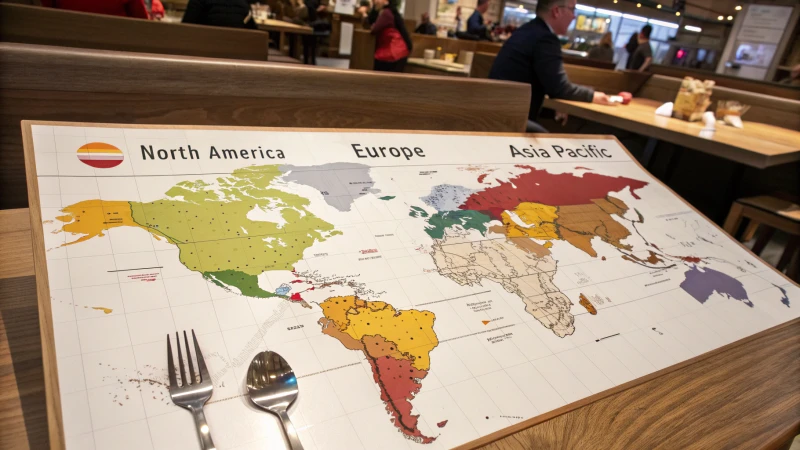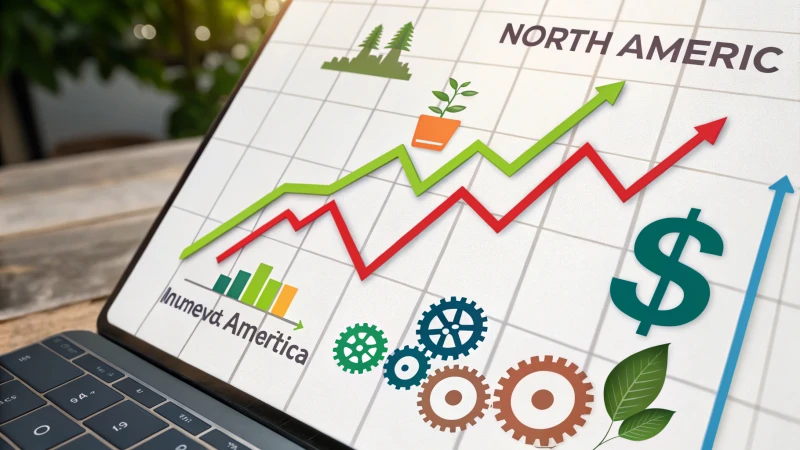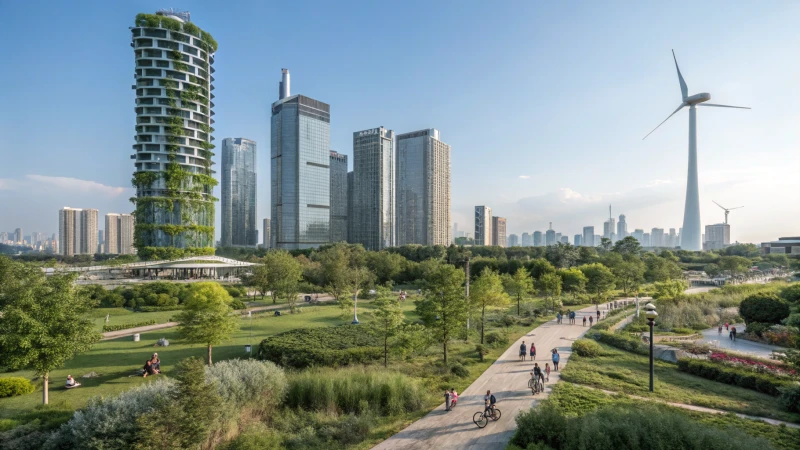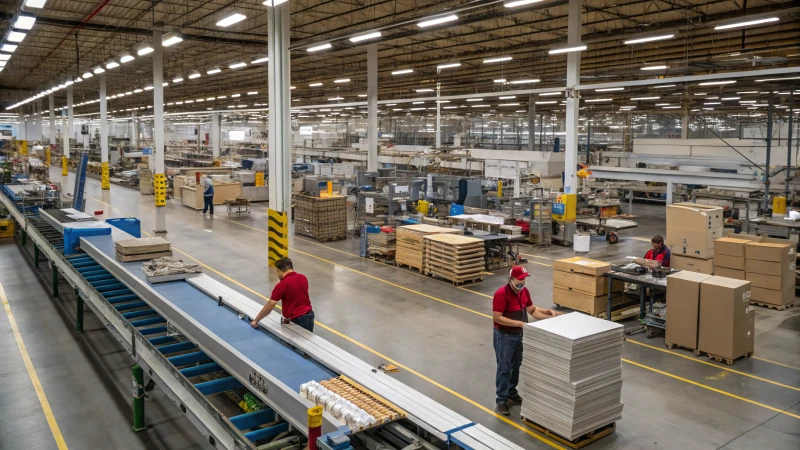
Have you ever wondered why eco-friendly disposable cutlery is suddenly everywhere? Let's dive into the regions where this green trend is booming!
North America, Europe, and the Asia-Pacific are the fastest growing regions for disposable wooden cutlery demand. Increased environmental awareness in these areas is driving a shift towards sustainable alternatives among businesses and consumers alike.
I remember when I first noticed a wooden fork in place of the usual plastic one at my favorite café. It got me thinking about how many others, like me, are making this switch. In North America, Europe, and the Asia-Pacific, this shift is more than just a trend—it's a growing movement towards sustainability. Businesses in these regions are responding to consumer demand for eco-friendly products by integrating biodegradable options into their offerings. Whether it's Sarah, a restaurant manager in Australia, or Ahmed, a procurement officer in the UAE, professionals across industries are embracing wooden cutlery for its environmental benefits and appeal to eco-conscious customers. The reasons behind this shift include increased awareness of plastic pollution and stricter regulations on single-use plastics. Understanding these trends can help manufacturers and suppliers identify strategic opportunities in these dynamic markets.
North America leads in wooden cutlery demand growth.False
While North America is growing, it is not the leading region.
Asia-Pacific is a top region for wooden cutlery demand.True
Asia-Pacific shows significant growth due to rising eco-awareness.
What's Fueling Demand Growth in North America?
Ever wondered why North America is buzzing with increased demand? It’s like the energy levels here are on a caffeine high, thanks to economic boosts, tech leaps, and eco-conscious strides.
Demand in North America is climbing due to economic growth, tech innovations, and a drive for sustainability, boosting consumption in key sectors like energy, manufacturing, and transportation.

Economic Growth and Industrial Expansion
Picture this: you're cruising down a highway and notice more cars than ever before. That's the automotive industry revving up its engines! Our economy is on a roll, with consumer spending hitting new highs. I remember walking into a store and feeling like everything was flying off the shelves. This surge means our factories are working overtime, especially in sectors like automotive, electronics, and consumer goods.
| Sector | Growth Rate (%) |
|---|---|
| Automotive | 5.7 |
| Electronics | 6.3 |
| Consumer Goods | 4.9 |
Technological Advancements
Let’s talk tech – remember when everyone started streaming everything? That explosion led to massive data center growth, guzzling electricity like there's no tomorrow. Then there's AI and IoT; these tech marvels are making our homes smarter but also hungrier for power. I recall setting up my smart home devices and being amazed at their convenience, yet they all add up to our energy bills.
The rapid advancement of technology has fueled demand, especially in data-intensive sectors. The proliferation of data centers to support cloud computing and digital services has spiked electricity consumption. Additionally, the adoption1 of AI and IoT devices in both residential and commercial applications has driven energy needs even further.
Shift Towards Sustainability
Going green isn’t just a trend; it’s a necessity. As I swapped my old car for an electric vehicle (and yes, I’m saving loads on fuel!), I saw firsthand the shift towards sustainable practices. Industries are embracing renewable energy and eco-friendly tech more than ever. The rise of electric vehicles and green2 buildings isn't just a stat; it’s a movement you can feel.
- Electric Vehicles:
- 2020: 2 million units
- 2023: 3.5 million units
Infrastructure Development
Have you seen the construction boom? It’s like every city is getting a makeover! With urbanization and population growth skyrocketing, new infrastructure projects are popping up everywhere. I’ve watched neighborhoods transform almost overnight, driven by the need to accommodate more people.
The demand for new infrastructure projects is escalating, driven by urbanization and population growth. The construction of smart cities and the upgrading of existing urban infrastructures require significant resources.
- Population Growth by Region:
- Northeast: +2.8%
- Southwest: +4.1%
Understanding these dynamics is crucial if you're looking to navigate the opportunities or risks tied to North America's rising demand. Whether you're a stakeholder or just someone curious about these trends, it's clear that we're on an exciting ride.
Economic growth boosts demand in North America.True
North America's economic growth leads to increased demand across sectors.
Electric vehicle sales decreased from 2020 to 2023.False
EV sales rose from 2 million units in 2020 to 3.5 million in 2023.
Why is Europe such an important market for wooden cutlery?
I still remember the first time I felt a real connection to sustainability in Europe. It was during a visit to a bustling market where every vendor proudly showcased eco-friendly products.
Europe stands out in the wooden cutlery market due to its stringent environmental regulations, strong consumer demand for sustainable products, and a committed drive to reduce plastic waste, making it a leading market.

As someone who's always been fascinated by how different cultures embrace sustainability, Europe's dedication to reducing plastic waste has always impressed me. It feels like every corner of this continent is embracing change.
Environmental Regulations Driving Change
The European Union (EU) has implemented comprehensive regulations aimed at reducing plastic waste. The Single-Use Plastics Directive3 is a pivotal policy that bans certain plastic items, including cutlery, driving demand for eco-friendly alternatives.
Consumer Preferences and Trends
From my experiences traveling across Europe, I've noticed a rising tide of eco-conscious consumers. It’s like there's this collective understanding of responsibility towards our planet. In a recent survey, many expressed a preference for products that are both sustainable and beautiful—exactly what wooden cutlery offers. Consumer behavior4 analysis reveals that Europeans prioritize quality and sustainability, making wooden cutlery a natural fit.
Market Size and Growth Forecasts
The market for wooden cutlery in Europe is projected to grow significantly. According to market research, this growth is fueled by both legislative measures and consumer trends. A market analysis5 indicates promising opportunities for manufacturers.
| Country | Demand Drivers | Key Insights |
|---|---|---|
| Germany | Environmental laws, high eco-awareness | Leading in sustainable practices |
| France | Government incentives for green products | Growing market for eco-friendly dining |
| Italy | Cultural appreciation of design | Aesthetic appeal boosts sales |
Business Strategy for Market Entry
If I were advising a business entering this market, I'd emphasize aligning with local values and standards. Collaborating with distributors who know the regulatory landscape can make all the difference. Offering customizable products can help brands stand out.
The Role of Certifications
Certifications such as FSC (Forest Stewardship Council) and PEFC (Programme for the Endorsement of Forest Certification) are crucial in building trust. These certifications assure consumers of the product's sustainability credentials. Learn more6 about gaining these certifications to enhance brand reputation.
Grasping these dynamics can help businesses tap into Europe's promising wooden cutlery market effectively.
The EU bans all plastic cutlery.False
The EU bans certain plastic items, not all plastic cutlery.
Wooden cutlery demand is rising in Europe.True
Demand rises due to eco-friendly trends and regulations.
How is the Asia-Pacific Region Leading in Sustainability Trends?
Have you ever wondered how the Asia-Pacific region is setting the pace in sustainability?
The Asia-Pacific region leads sustainability trends through comprehensive government policies, innovative technology adoption, and a strong focus on renewable energy, setting a global benchmark for environmental leadership.

Government Initiatives and Policies
In my journey exploring sustainability, I found it fascinating how countries like China and Japan are not just talking the talk but walking the walk when it comes to environmental regulations. Picture this: China, with its vast landscapes and growing urban areas, is now a powerhouse in solar and wind energy production. And Japan? Its ambitious goal of achieving carbon neutrality by 2050 is a testament to its commitment to a greener future. These initiatives aren’t just policies on paper; they’re shaping real change and setting standards that the world can look up to.
| Country | Key Initiative | Impact on Sustainability |
|---|---|---|
| China | Solar Energy Investment | Leader in Renewable Energy |
| Japan | Carbon Neutrality by 2050 | Reduced Carbon Footprint |
Technological Innovation
On a trip to Singapore, I was truly amazed by the Smart Nation initiative. Imagine a city where technology seamlessly integrates into everyday life to promote energy efficiency. It's like stepping into the future! And then there's Australia, where blockchain technology is revolutionizing supply chain management. These technological advancements are not only impressive but are also paving the way for more sustainable living across the region.
| Country | Key Initiative | Impact on Sustainability |
|---|---|---|
| Singapore | Smart Nation Initiative | Enhanced Urban Sustainability |
| Australia | Blockchain in Supply Chain Management | Innovative Approach to Sustainability |
Focus on Renewable Energy
I remember attending a conference where India’s International Solar Alliance was highlighted. It was inspiring to see such collaborative efforts aimed at promoting solar energy across Asia-Pacific. This alliance is more than just about reducing fossil fuel dependency; it's a beacon of hope in our fight against climate change.
Other countries, like Thailand, are also exploring diverse renewable sources, proving that wind and hydropower can meet energy demands sustainably. These projects are not just about generating power; they’re about creating a legacy for future generations.
Sustainable Agriculture Practices
I’ve always been passionate about food security, so learning about Vietnam's strides in organic farming and agroforestry was a real eye-opener. These practices aren’t just about boosting productivity; they’re about preserving our planet’s biodiversity. By maintaining harmony between agriculture and nature, these initiatives provide a model for balancing growth with conservation.
The Asia-Pacific region’s multifaceted approach to sustainability is a masterclass in combining policy-driven actions with technological innovations. It's not just about what we can learn from their successes but also how we can adapt their strategies to our own contexts, ensuring that we too contribute positively to our environment.
Explore more about sustainable agriculture practices7 to understand how these methods contribute to environmental conservation.
China is a global leader in renewable energy production.True
China's investment in solar and wind technologies has positioned it as a leader.
Japan aims for carbon neutrality by 2030.False
Japan's target for carbon neutrality is set for the year 2050.
What hurdles do manufacturers encounter when trying to meet demand?
Ever wondered what keeps manufacturers up at night? Let me take you on a journey through the maze of challenges they face, from supply chain hiccups to changing consumer whims.
Manufacturers face hurdles like supply chain disruptions, labor shortages, and shifting consumer preferences. Tackling these issues requires savvy planning, investing in technology, and embracing sustainable practices to stay ahead.

Supply Chain Disruptions
Ah, the tangled web of supply chains! It's like trying to keep a house of cards standing while the wind is blowing. I've seen how a single disruption8 can ripple through an entire production line. Natural disasters, political tensions, or sudden global events can stop the flow of materials in its tracks. To combat this, I remember how a wise mentor once told me, "Never put all your eggs in one basket." Diversifying suppliers is crucial.
Labor Shortages
Labor shortages are like trying to bake a cake without enough ingredients. In my early days working with manufacturing teams, we often struggled to find skilled workers. An aging workforce and younger folks eyeing tech startups instead of factory floors compound the issue. We've had to get creative—think robots and training boot camps—to attract fresh talent and keep operations humming.
Technological Advancements
Keeping up with technology feels like being on a never-ending treadmill. Just when you think you've mastered the latest gadget, something newer and shinier comes along. I've seen firsthand how upgrading equipment and retraining staff can be both daunting and costly. But those who embrace change often find themselves miles ahead in the race.
| Challenge | Impact | Solution |
|---|---|---|
| Supply Chain Disruptions | Delays in production | Diversify suppliers |
| Labor Shortages | Reduced output | Invest in automation |
| Evolving Consumer Preferences | Need for sustainable products | Adopt eco-friendly practices |
Evolving Consumer Preferences
Today's consumers are like environmental detectives, scrutinizing every product for its green credentials. I remember when my team shifted to eco-friendly practices—what a ride! Sourcing sustainable materials adds layers of complexity, but it's also incredibly rewarding to align with consumer values.
Regulatory Compliance
Navigating regulatory compliance is akin to playing a high-stakes game of chess. Each move is calculated and crucial. Governments worldwide are tightening regulations on environmental impact and labor practices9, and staying compliant requires obtaining certifications and meeting international standards—no small feat.
Economic Uncertainty
Economic fluctuations feel like the weather; sometimes sunny, sometimes stormy. I’ve learned that agility is key—being able to pivot strategies quickly can mean the difference between thriving or merely surviving.
Exploring these challenges from different angles helps manufacturers like us better prepare for future demands, ensuring we're ready to meet whatever comes our way.
Labor shortages are due to an aging workforce.True
An aging workforce contributes significantly to labor shortages.
All manufacturers have adopted eco-friendly practices.False
Not all manufacturers have implemented eco-friendly practices yet.
Conclusion
North America, Europe, and Asia-Pacific are rapidly increasing their demand for disposable wooden cutlery due to heightened environmental awareness and a shift towards sustainable alternatives.
-
This link offers detailed analysis on technology's role in increasing energy demand. ↩
-
Discover the latest trends and statistics on the expanding EV market. ↩
-
This link provides detailed information on the EU's directive that bans certain plastic items, influencing market trends. ↩
-
Discover insights into how European consumers prioritize sustainability in their purchasing decisions. ↩
-
Explore forecasts and analyses that highlight growth opportunities in Europe's wooden cutlery sector. ↩
-
Learn about the benefits and requirements of obtaining crucial certifications for sustainability. ↩
-
Sustainable agriculture practices are crucial for environmental conservation, enhancing food security while maintaining biodiversity. ↩
-
Understanding how supply chain disruptions impact manufacturing is crucial for developing strategies to mitigate these risks. ↩
-
Understanding regulatory challenges helps manufacturers ensure compliance and avoid penalties. ↩

